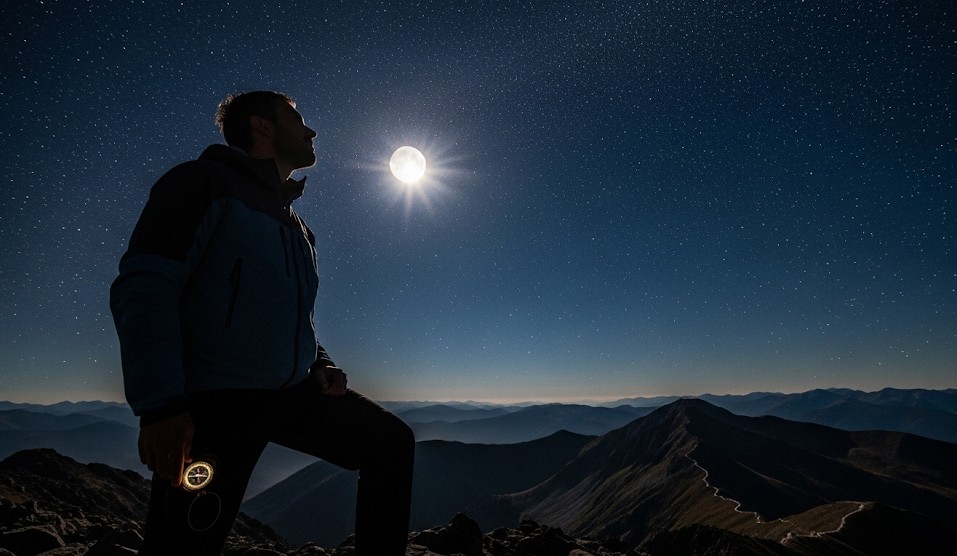Night Navigation by Stars & Moon

Objective
Hold a bearing at night using the North Star, star paths, and the moon’s motion—without electronics.
Scenario (Example)
Example: Clear night above treeline; you must traverse a gentle slope to a saddle northeast of your camp.
Finding North (Northern Hemisphere)
- Locate the Big Dipper; draw a line through the two “pointer” stars to Polaris.
- Polaris sits roughly over true north; set your line of march.
Southern Hemisphere
Use the Southern Cross: extend the long axis ~4.5 times to approximate south; bracket with pointers (Alpha/Beta Centauri).
Moon Clues
Moon rises roughly east and sets west; its horns point roughly away from the sun. Track motion across the sky to maintain direction.
Real Example
Team used Polaris to keep a NE course, checking every 5–10 minutes to correct drift caused by side slope.
Checklist
- Red-light headlamp to preserve night vision
- Warm layers; slower pace plan
Contingencies
- Clouds move in → stop or switch to terrain handrails you identified by day.
- Fatigue → shorten legs; increase checks; avoid cliffed terrain.
After-Action
Practice locating Polaris and the Southern Cross on clear nights so it’s automatic on trips.
← Previous | All Articles | Next →
